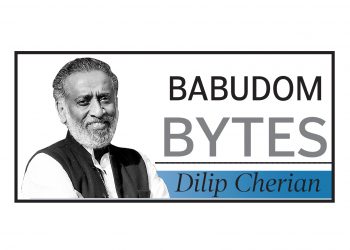The Central Vista project is finally picking up steam, with a buzz around relocating key government ministries to swanky, high-tech offices and repurposing the iconic North and South Blocks for something more grandiose. Sources have informed DKB that the Ministry of Finance will be leading this first phase, trading its North Block address for a spot in the new Common Central Secretariat (CCS) complex, alongside over a dozen other ministries. The goal? A seamless transition by March 2025, which means the clock is ticking for babus to pack up their files. And while all eyes are on this move, there’s another project quietly waiting in the wings: the Yuge Yugeen Bharat Museum (YYBM). This ambitious museum is slated to transform the heritage-rich North and South Blocks, presenting a “timeless India” for future generations. But there’s a hitch: the Culture Ministry, tasked with building this museum, has been waiting for the handover of these blocks, now expected by mid-2025. This comes after an October 2019 projection, which aimed for a March 2024 finish for the CCS buildings—a deadline that has come and gone, much like a few others in the Vista project. In the latest round of meetings, it seems officials got a nudge to step up the pace. Apparently, the target is now January for completing the first CCS buildings to allow the big move. As for North and South Blocks, June 2025 is the current deadline for the handover, with conservation work starting soon after. It’s a race against time, given the project’s ambitious scope and the looming 2029 election year. Clearly, the Centre wants the Vista facelift finished before the next big polls.
Passing the baton or passing the buck
The Centre’s recent stance on disciplinary authority over IAS and IPS officers is stirring the pot, and it could have some serious ripple effects on Centre-state dynamics. In the Calcutta High Court recently, the Centre made it clear that states, not the Department of Personnel and Training (DoPT), have the power to take action against officers serving within their borders. This statement came in response to a petition against former Kolkata Police Commissioner Vineet Goyal, who allegedly revealed the victim’s name in a high-profile case. According to the Ministry of Home Affairs’ circular last month, the Additional Solicitor General informed the bench that states have jurisdiction when it comes to holding IAS, IPS, or IFS officers accountable for any misconduct. This clarification shifts the burden to states, essentially sidestepping the Centre from the responsibility—a move that some might see as “passing the buck.” But this isn’t just about one case or one officer. It’s a reflection of a broader trend, as states increasingly push back on what they see as Centre-led overreach. With this new position, the Centre seems to be inviting states to take on greater responsibility, potentially leading to a fractured approach in the way bureaucratic discipline is enforced across India. For example, some states may be tougher or more lenient than others, setting up a patchwork of standards that could make officers wary about which state they’re posted in next. And, let’s be honest, it also opens the door for states to exert a bit more political leverage when it comes to “disciplining” officers who may not be playing by local rules. As the Centre and states continue this dance over authority, one thing’s for sure: the ground rules of Centre-state relations are quietly being rewritten. Whether this ends up fostering more collaboration or leads to more tussles is something to keep an eye on.
Project delays or a play of timing?
In a surprising move, a senior IAS officer, holding a prestigious post since June 2021, was abruptly sidelined just a month before retirement. Officially, his removal was attributed to project delays, but the timing of this bureaucratic shake-up has left many raising their eyebrows. Along with this officer, nine others found themselves reassigned, sparking speculation about what’s really behind this shuffle. Here’s where it gets interesting: the key official who could have influenced this decision—a batch mate of the officer in question— was absent on the day it all went down. Many believe that if this individual had been around, perhaps the outcome would’ve been different, sparing the officer from being placed on a waitlist so close to retirement. So, was it all about project delays, or did timing play a crucial role here? The officer’s abrupt removal right before retirement, combined with the absence of an influential colleague, suggests there’s more to the story. It’s not uncommon for bureaucracy to be as much about timing and relationships as it is about performance. For now, though, all we can do is wait and watch—until the next chapter in this ongoing saga unfolds.
Dilip Cherian
